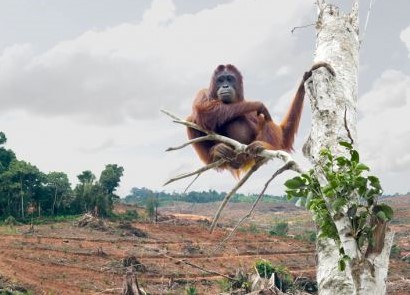What is palm oil?
Palm oil is a type of vegetable oil made from the fruit of the African oil palm tree, Elaeis Guineensis, which originates from West Africa. It grows successfully in any humid tropical climate and today is grown throughout the world.
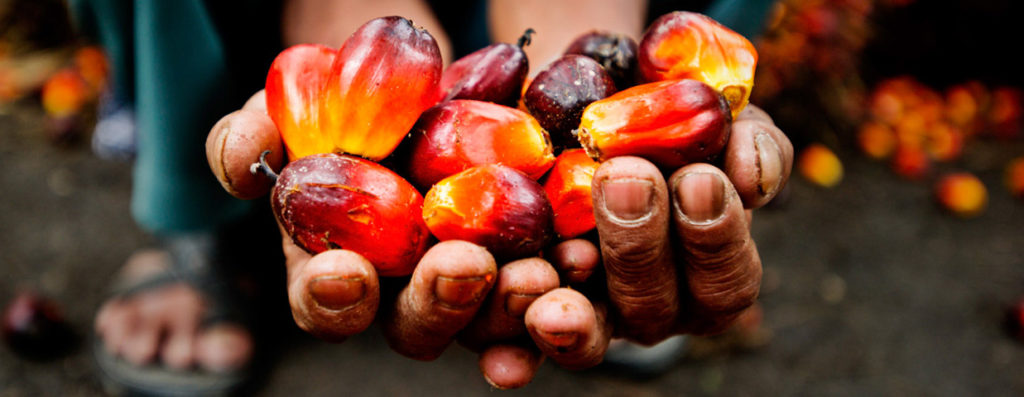
It is the most widely produced oil in the world and accounts for 35% of the world’s vegetable oil production. Approximately 85% of all globally and exported palm oil comes from Malaysia and Indonesia.
It is a high yielding crop which takes between 3-4 years to mature and produce fruit. The palm fruit itself develops in bunches which can grow in excess of 10 kilograms, and contain hundreds of individual fruits about the size of a small plum or apricot. The tree produces two types of oil; palm oil is obtained from the flesh of the fruit, and palm kernel oil is produced by extracting the oil from the internal seed (kernel).
What is palm oil used for?
Palm oil has become increasingly desirable to manufacturers because it is widely available, cheap to produce and has a broad spectrum of uses.
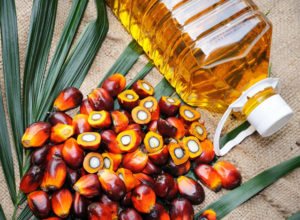 It is incredibly versatile oil which is used in around 50% of products consumers purchase and use on a daily basis including cleaning products, shampoos, soaps, cosmetics, candles and toothpaste. Most of the palm oil consumed is found in food. It is in everything from cooking oil and margarine to chips, cookies, chocolate, biscuits, peanut butter and ice cream.
It is incredibly versatile oil which is used in around 50% of products consumers purchase and use on a daily basis including cleaning products, shampoos, soaps, cosmetics, candles and toothpaste. Most of the palm oil consumed is found in food. It is in everything from cooking oil and margarine to chips, cookies, chocolate, biscuits, peanut butter and ice cream.
Palm oil is also used to manufacture bio fuel for motor vehicles, shipping and aircraft. The pulp left after the oil has been extracted from the kernel is also formed into ‘palm kernel cake’ which is used as feed for livestock.

Why is palm oil bad for the environment?
Palm oil is one of the primary causes for deforestation. Palm oil trees grow best on land that has not been previously used for agriculture, which means primary rainforests are cleared to make room for expanding palm plantations. When land is cleared for palm oil plantations it is often burned. The fires frequently get out of control and emit enormous amounts of harmful smoke and greenhouse gases.
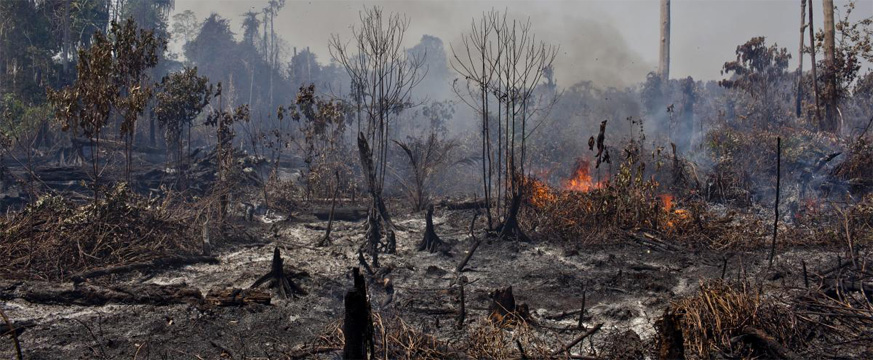
Worst yet, the primary rainforests that are targeted for palm oil plantations sit on top of peat bogs, which store more carbon dioxide than any other ecosystem in the world. Burning them releases more carbon dioxide than any other type of forest and produce some of the world’s worst pollution, sending suffocating smog to cities hundreds of miles away in Malaysia and Singapore.

Once a palm oil plantation is established it continues to harm the environment as the chemical pesticides and fertilizers used in the plantations pollute local rivers and can poison people and animals.
Palm oil is now considered a major cause of climate change and global warming, with Indonesia now responsible for the third highest level of greenhouse gas emissions in the world as a result of deforestation for palm oil.
Why is palm oil bad for orangutans?
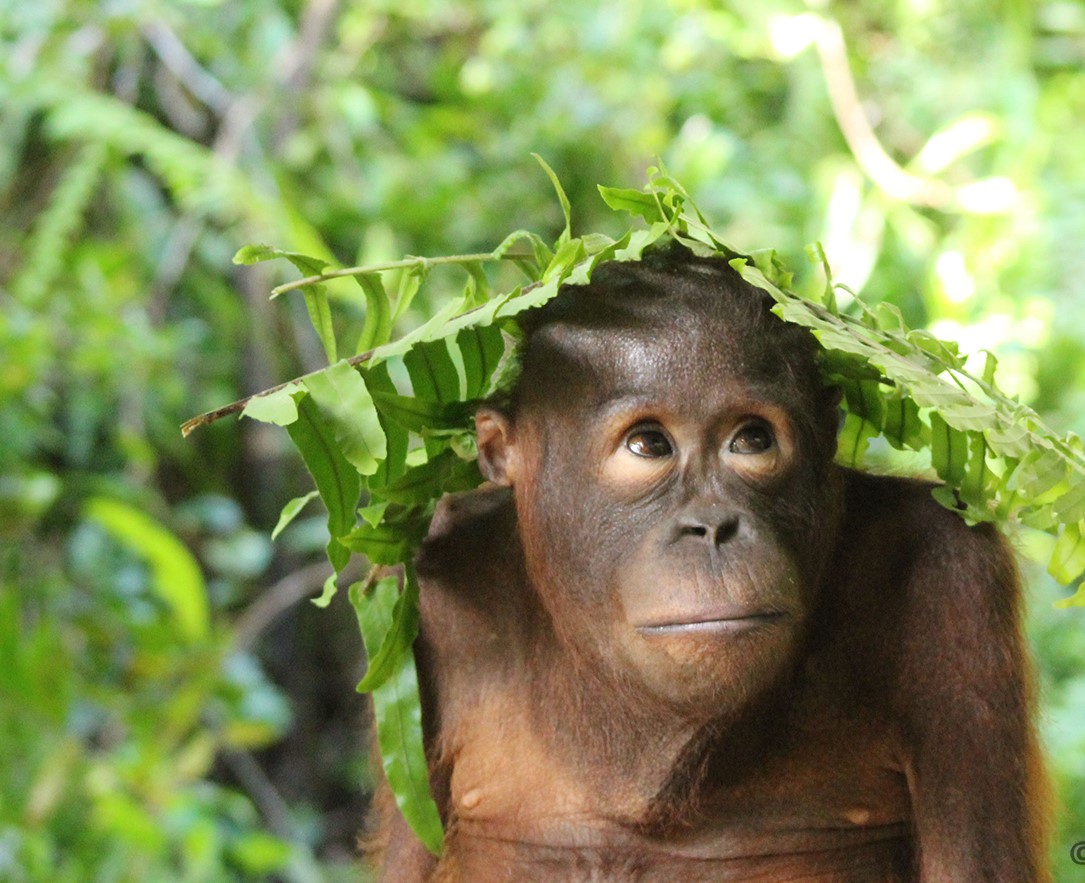 When primary rainforest is destroyed to make way for palm oil plantations the orangutan’s habitat is destroyed and they have nowhere to live. Having lost their forest home orangutans become displaced and confused. With no source of food they inevitably starve to death or wander into the palm oil plantations, only to be killed by plantation workers who often view them as pests. As their natural habitat diminishes, orangutans become more vulnerable to poachers, who kill orangutan mothers in order to capture their infants who are kept as pets or are smuggled to sell in the illegal wildlife trade.
When primary rainforest is destroyed to make way for palm oil plantations the orangutan’s habitat is destroyed and they have nowhere to live. Having lost their forest home orangutans become displaced and confused. With no source of food they inevitably starve to death or wander into the palm oil plantations, only to be killed by plantation workers who often view them as pests. As their natural habitat diminishes, orangutans become more vulnerable to poachers, who kill orangutan mothers in order to capture their infants who are kept as pets or are smuggled to sell in the illegal wildlife trade.
It is estimated that between 1,000 and 5,000 orangutans are killed every year because of palm oil development. In just the last decade, the orangutan population has dropped by 50%, while the land used for palm oil plantations has doubled. Orangutans have lost 90% of their primary tropical rainforest habitat and many of the wild populations that are left have been cut off from each other.
If the current rate of palm oil industry expansion continues orangutans could become extinct in the next few decades – if not sooner. It’s important to remember that deforestation doesn’t just harm orangutans… large scale forest clearing and burning affects all of the wildlife species that rely on it and destroys the biodiversity of the entire ecosystem.
Why is palm oil bad for people?
Palm oil is bad for farmers and local communities as plantations often offer poor working conditions, child labour and long hours. Plantations are often established on contested land which can result in indigenous communities losing their land and livelihood.

Palm oil is also bad for your health. It is high in saturated fat which can have negative effects on your health such as an increased risk of developing high cholesterol, cardiovascular disease and type 2 diabetes.
What about sustainable palm oil?
First we need to understand what is meant by sustainable. In the context of palm oil, sustainable refers to palm oil that has been certified by the Roundtable on Sustainable Palm Oil (RSPO) according to a set of environmental and social criteria. In order to produce Certified Sustainable Palm Oil (CSPO), companies must comply with these criteria which aim to help to minimise negative impacts of palm oil cultivation on the environment and communities in palm oil-producing regions.
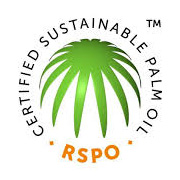 The RSPO was established in 2004 to promote the production and use of sustainable palm oil for prosperity, people and planet. The current RSPO principles (reviewed in 2018) require their production level companies and growers to:
The RSPO was established in 2004 to promote the production and use of sustainable palm oil for prosperity, people and planet. The current RSPO principles (reviewed in 2018) require their production level companies and growers to:
Principle 1. Behave ethically and transparently
Principle 2. Operate legally and respect rights
Principle 3. Optimise productivity, efficiency, positive impacts and resilience
Principle 4. Respect community and human rights and deliver benefits
Principle 5. Support smallholder inclusion
Principle 6. Respect workers’ rights and conditions
Principle 7. Protect, conserve and enhance ecosystems and the environment
(Source: https://www.rspo.org/)
The reviewed principles aim to provide stronger protection for forests with high conservation value and state responsible palm oil production must now be free from deforestation, free from expansion and unsustainable replanting on peat, and free from the use of fire.
These principles are encouraging; however given most palm oil plantations in Indonesia are grown on land that was once originally primary rainforest, it is difficult to say any palm oil can be genuinely labelled as sustainable.
Additionally, the palm oil industry has a large and complex supply chain which is difficult to monitor and trace. At this stage we are not convinced that the RSPO is enforcing its standards rigorously enough to ensure their members are complying with the principles to ensure deforestation-free palm oil.
Finally, RSPO-certified growers only account for 19% of global palm oil production, which means over 80% of palm oil is considered unsustainable. These palm oil producers are actively engaged in the destruction of the rainforest and therefore threatening the survival of the orangutan.

RSPO is a step in the right direction; however until all palm oil is 100% traceable and deforestation-free we believe no palm oil is the best palm oil.
Our thoughts on sustainable palm oil as it exists at this time
It’s not that we have anything against the concept of “sustainable” palm oil however we believe that in reality, at this time, it doesn’t exist, regardless of what some companies may claim. Sustainable palm oil may be coming one day, but companies now pledging to be “sustainable” have not returned the tropical rainforests that they destroyed to establish their palm oil plantations. So how can these plantations claim to be “sustainable”? Restitution for the deforestation of the past is necessary for the sustainability of palm oil in the future.
Orangutans wait for the day when sustainable palm oil truly exists! Until that day comes, we believe the best palm oil is no palm oil.
If you can’t avoid palm oil completely, you can do your best to reduce consumption. If you must purchase it, make sure it is 100% traceable certified sustainable palm oil (CSPO).

Can palm oil be replaced by other oils?
Unfortunately there will always be a global demand for palm oil. Many people argue that it is better to demand sustainable palm oil rather than boycott palm oil altogether as the oil crops needed to replace palm oil, such as sunflower, soybean and rapeseed, require larger amounts of land to produce the same amount of oil.
How can I tell if there is palm oil in products?
Unfortunately it can be very difficult to tell if a product contains palm oil, as it is often disguised as ‘vegetable oil’ and can be listed as hundreds of different names, as you will see in the list below.
In Australia and New Zealand, there are only three vegetable oils which must, by law, be labelled due to the increasing incidence of food allergies. They are peanut oil, sesame oil and soybean oil. All other vegetable oils can be labelled as vegetable oil. However, the label must declare the amount of saturated fat in the product.
To simplify, oils fall into 3 main categories:
- Polyunsaturated e.g. sunflower
- Monounsaturated e.g. canola, olive
- Saturated e.g. palm, coconut
Typically, if the label declares ‘vegetable oil’ and is high in saturated fat, it’s very likely that the oil base is palm oil, with the exception of coconut oil.
Become a palm detective!
Here are some tips to help you avoid palm oil:
- Choose products that contain clearly labelled oils such as 100-percent sunflower oil, corn oil, olive oil, coconut oil or canola oil. Some companies producing palm oil free products are now labelling them as so, making it easier to find them!
- Avoid ingredients with the word palm in it including palmitate, palmitoyl, palm kernel, palmitoleic, or simply palm as these will contain palm oil. Note: Palm sugar is not associated with palm oil. It is manufactured and harvested in a completely different way, so using palm sugar is okay.
- Google it! If you’re unsure Google the product followed by the words ‘palm oil’ and often you can find the answer.
- If you must buy a product containing palm oil, make sure it is certified sustainable palm oil (CSPO).
Palm Oil Awareness Toolkit
OFI have developed a Palm Oil Awareness Toolkit which includes everything you need to know about palm oil. Download the toolkit here.
Palm Oil Card
We have developed a palm oil card which lists some of the most common names for palm oil to help you.

If you would like us to post you a palm oil card, please send a stamped self addressed envelope to:
Palm oil card
OFI Australia
PO Box 8940, Gold Coast MC
Bundall Qld 9726
Alternatively, you may like to download our Palm Oil Wallet Card here: OFIA Palm Oil Wallet Card
Alternative names for palm oil
Unfortunately the list of alternative names for palm oil is huge, so we have compiled a list that you can down load and it is in alphabetical order for easier reference. We have also added a list of what palm oil is called in several different languages.
Download here: Palm Oil Alternative Names (updated July 2019)
Download here: What palm oil is called in other languages
What about palm sugar?
Palm sugar is not palm oil. It is manufactured and harvested in a completely different way, so using palm sugar is okay.
Is E471 palm oil?
Not always. An E number gives no indication as to the source of the ingredient it came from. E471 is an emulsifier, used to bind our oils and water together so a product does not separate. E471 can come from palm oil, coconut oil, soybean oil, cottonseed oil or canola oil.

